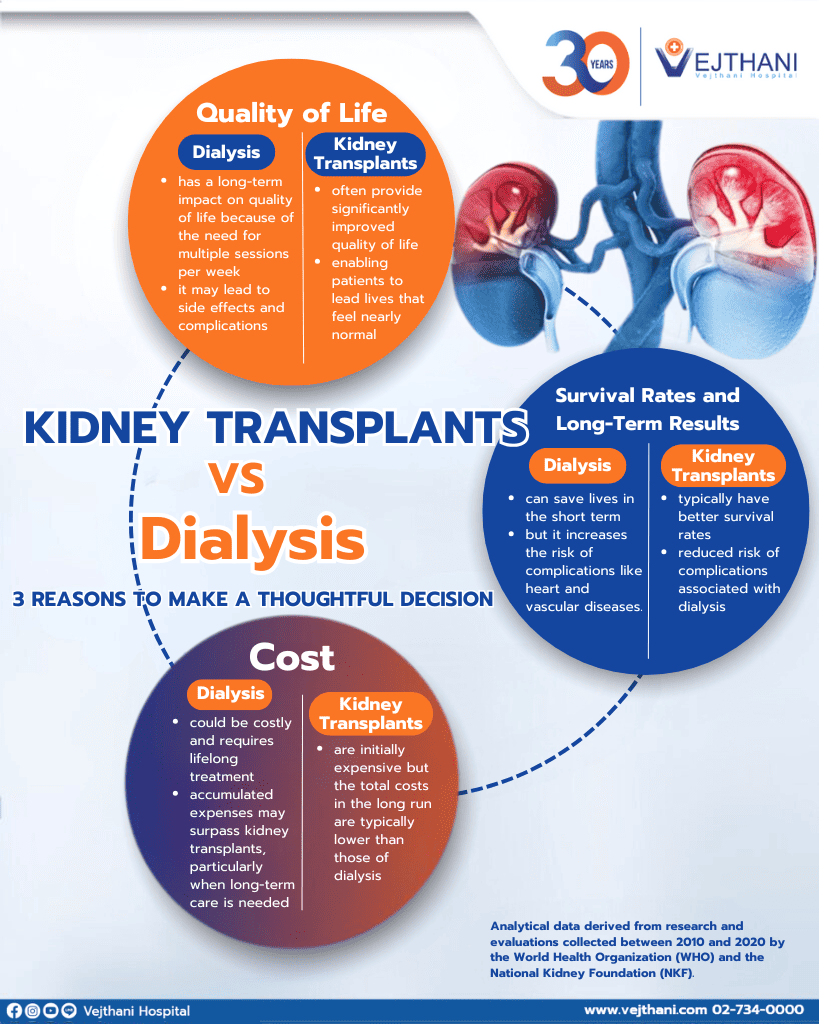Differences Between Traditional Hemodialysis and Online HDF
The Hemodialysis Center at Vejthani Hospital offers both traditional hemodialysis and Online Hemodiafiltration

Choose the path to a healthier, longer life. Discover the differences between dialysis and kidney transplant, and gain essential insights to make informed decisions that prioritize your health and enhance your quality of life.
Dialysis sustains life and allows patients to continue their daily routines, but it has a long-term impact on quality of life because of the need for multiple sessions per week. Additionally, dialysis may lead to side effects like fatigue, muscle pain, and complications affecting other systems in the body.
Kidney transplants often provide a significantly improved quality of life, enabling patients to lead lives that feel nearly normal. However, immunosuppressive medications are required for the long term to minimize the risk of kidney rejection.
While dialysis can save lives in the short term, it has limitations on the lifespan of the remaining kidney. It increases the risk of complications like heart and vascular diseases.
Patients who undergo kidney transplants generally experience better long-term survival rates, depending on factors such as post-transplant care and adherence to doctor’s advice.
Dialysis could be costly and requires lifelong treatment. The accumulated expenses may surpass those of kidney transplants, particularly when long-term care is needed.
Although kidney transplants are initially expensive, the total costs in the long run are typically lower than those of dialysis.
Source:
Analytical data derived from research and evaluations collected between 2010 and 2020 by the World Health Organization (WHO) and the National Kidney Foundation (NKF).
Hemodialysis Center, Vejthani Hospital
Call: (+66)2-734-0000 Ext. 5021
English Hotline: (+66)85-223-8888